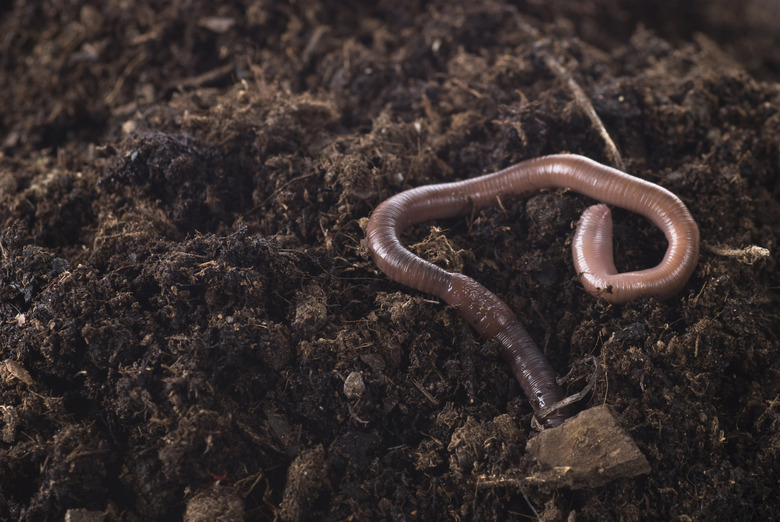How To Get Rid Of Earthworms
We may receive a commission on purchases made from links.
Earthworms are fascinating creatures that dive deep into the soil and do their magic to increase soil fertility and aeration. Most gardeners treasure earthworms, who can turn infertile, slow-draining soil into rich, well-textured soil that can support a healthy, thriving garden. But if your lawn has become a bumpy mess, or earthworm castings have surfaced, you may want to control their population.
How Earthworms Work
How Earthworms Work
Various educational sites refer to earthworms as "engineers," "nature's soil scientists," or just voracious eaters. Earthworms — also called "nightcrawlers" — can eat the equivalent of their own body weight daily. They eat dead plants and leaves, fungi and bacteria, and also dead animals.
Processing this food is the secret to their magic: As this matter moves through their intestines, the worms break it down and inoculate it with microorganisms, making the nutrients more accessible to plants. Their poop, called "castings," is like soil gold, containing far more nutrients than the original soil: 5 times more nitrogen, 7 times more phosphorus, and 1,000 times more beneficial bacteria! But that's not all.
In addition to providing fertilizer through their castings, earthworm activity aerates and filters the soil. Earthworms can carry fertile organic matter into deep soil layers and can actually turn over the top 6 inches of soil in a 10- to 20-year time period. While moving around all this organic matter, they increase the water-holding capacity of the soil while at the same time improving drainage. A cool thing are their burrows: Some earthworm species create permanent burrows that persist long after the worm is gone, acting as excellent conduits for soil drainage. These also provide nutrient-rich channels for root growth, helping plants' roots reach deep into the soil.
Reducing Earthworm Populations in Lawns
Reducing Earthworm Populations in Lawns
Sometimes, though, earthworms can be too much of a good thing, especially in a lawn. High levels of worm castings can actually burn a lawn with their too-nutrient-rich fertilizer. In this case, you may see brown or yellow patches underneath the area where a pile of castings has surfaced. Another problem can be the mounds of castings themselves, which can create an uneven, unsightly surface.
Before trying chemicals, try to create a less hospitable environment for the earthworms, for instance, by watering less. Worms love moist soil, so try to let your lawn dry out a bit between waterings. Rake the worm castings daily to disperse the mounds, keeping in mind that raking alone will not lower worm populations.
There is a chemical solution homeowners can use to control earthworms, but use this as a last resort. First, let your lawn green completely; then rent or purchase a power rake, also called a dethatcher, and run it over the lawn in two directions. This not only breaks up thatch but removes the castings as well. Next, water your lawn deeply to saturate the top 3 inches of soil. Finally, treat the lawn with liquid carbaryl, sold as Sevin. This product is designed to treat a lawn for grubs, but also kills earthworms. Wait at least two weeks to see if new castings surface; if they do, treat again.
Warning
Do not purchase electric earthworm removal probes. These have been shown to pose danger of electrocution to consumers.
Note that some people have tried electric earthworm removal probes, used by fishermen to harvest worms from the ground. These were popular in the 1980s and '90s, but most were recalled because they posed electrocution risk to consumers. Don't purchase these if you find them sold and do your homework if you choose to make one of your own, because you don't want to incorporate a high enough electrical current to be dangerous.
